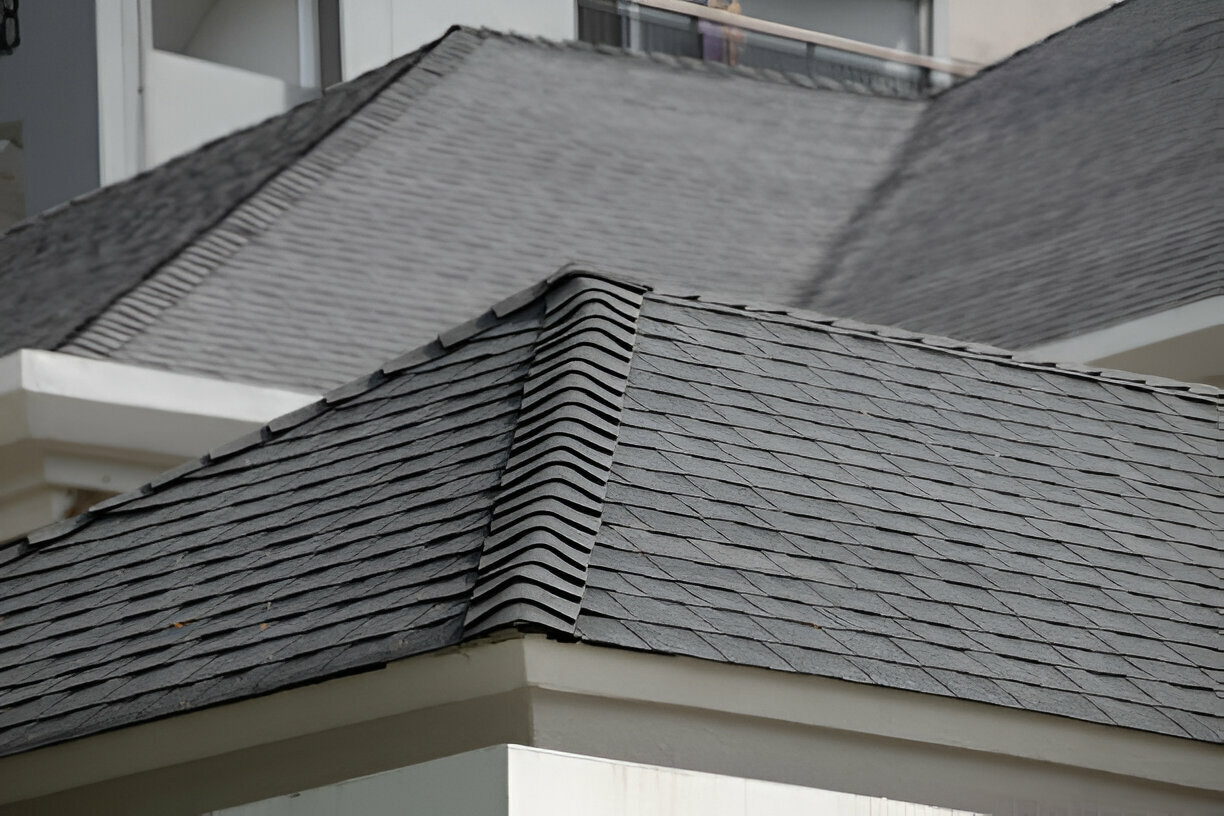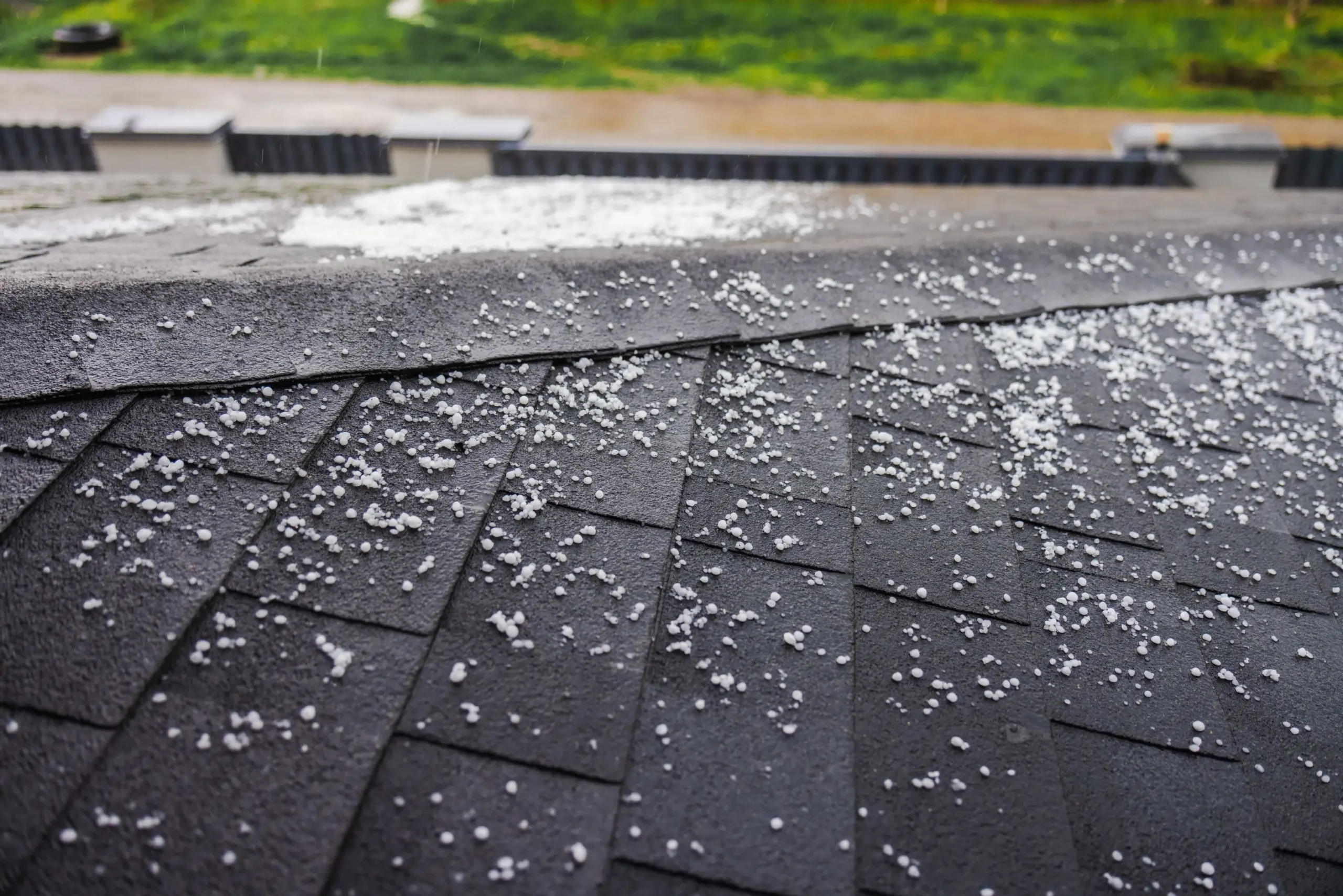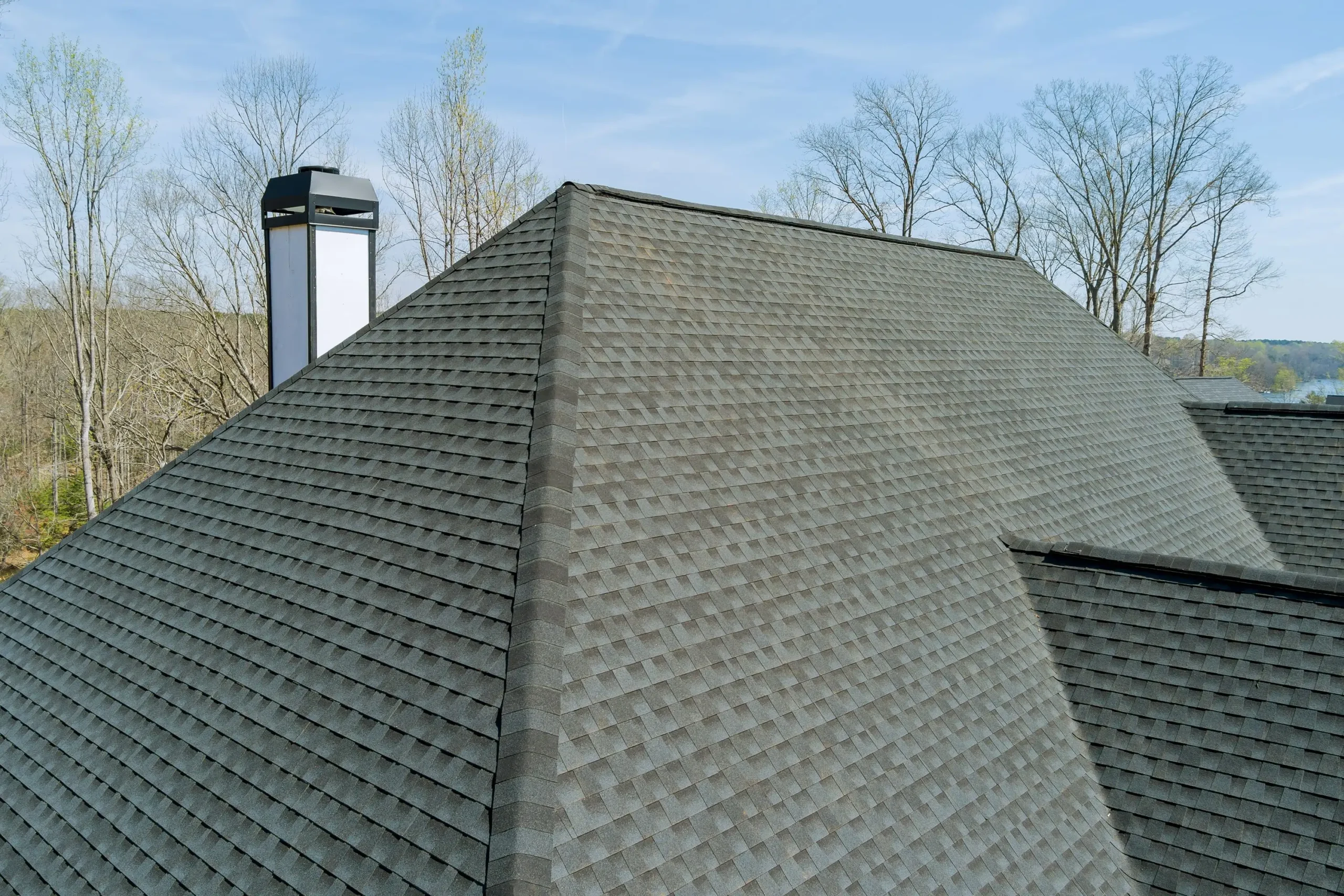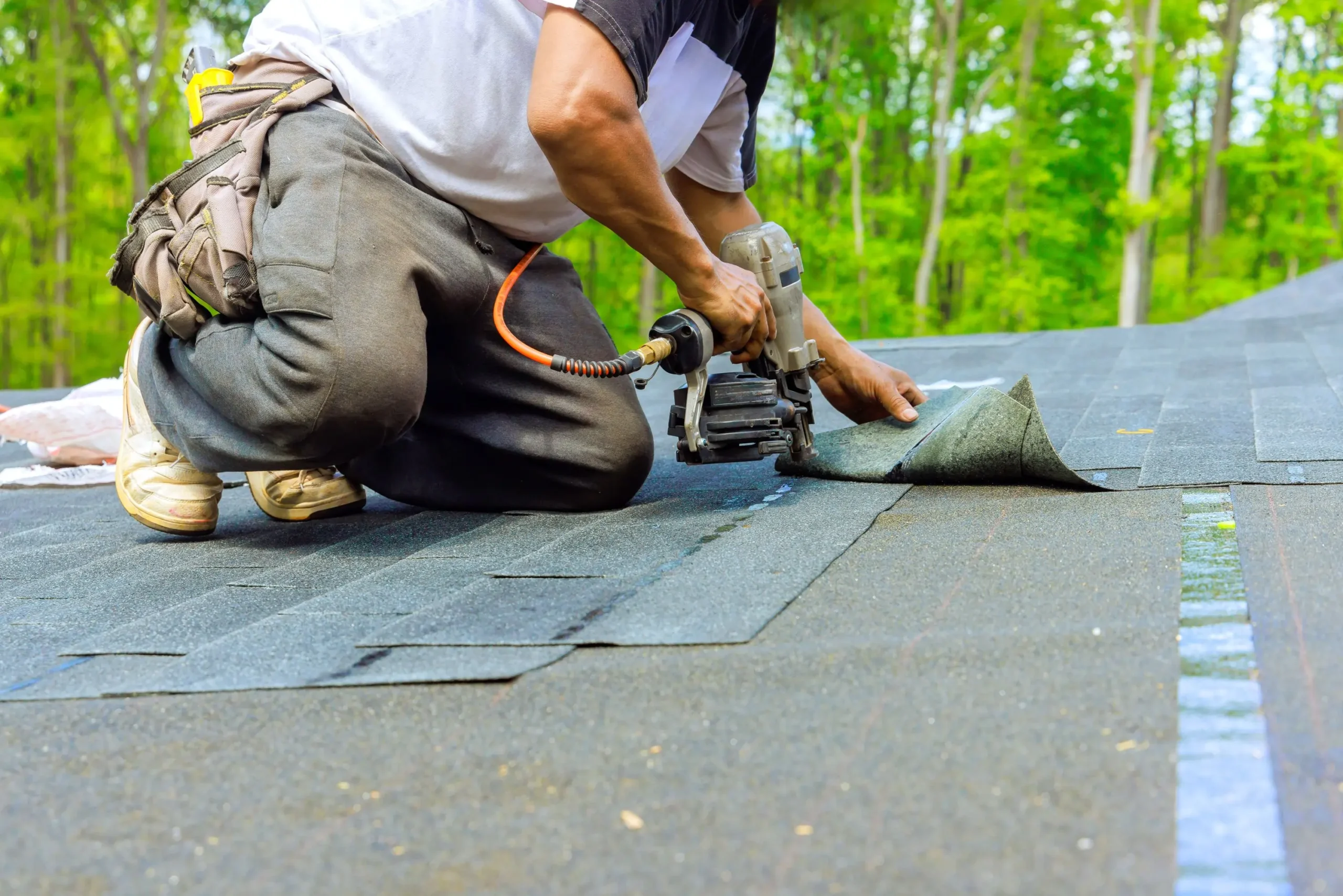Selecting the proper material for a flat roof is a critical decision.
Two of the most sought-after roofing materials for flat roofs are
rubber roofing and asphalt roofing, or built-up roofing (BUR). Both
have their advantages and disadvantages but which one is
optimal for your home or commercial property in Calgary?
Straight Path Construction assists homeowners and business
owners with making wise, long-term roofing decisions. Here in
this blog, we’re comparing rubber roofing and asphalt roofing to
assist you in deciding what’s best for your flat roof.
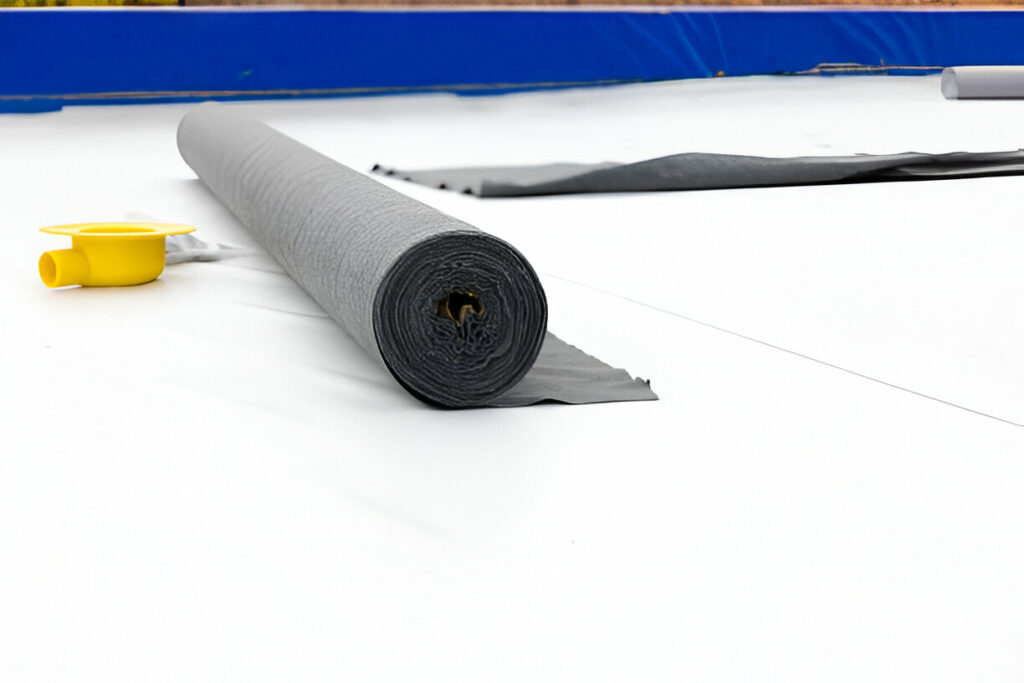
What Is Rubber Roofing?
Rubber roofing, or EuroShield, is a type of single-ply membrane
constructed from synthetic rubber. It’s lightweight, pliable, and
applied in vast sheets, which results in excellent few seams and
fewer leaks. EuroShield is particularly favoured for flat and low-slope
roofs on residential and commercial properties.
What Is Asphalt (Built-Up) Roofing?
Asphalt, or BUR, roofing has been used for decades. It is composed of
layers of bitumen and felt, with a top layer of gravel or a reflective
surface. It’s thick and strong, with good resistance to foot traffic and
the sun. But it’s heavier and more to install.
Appearance and Design Flexibility
Though functionality is important, some owners also are concerned
with how a roof is going to appear. Rubber roofing is smooth and
clean, usually sold in black or white. It can be coated for colour
adaptability and UV resistance. Asphalt roofing is more textured, and
usually covered with gravel, which may not be everyone’s preference.
If aesthetics are concerned, rubber roofing provides a slimmer, more
contemporary appearance for flat roof areas exposed to view such
as additions to homes or garages.
Noise and Comfort
Rubber roofs have superior sound insulation compared to asphalt,
which can muffle the heavy rain or hail during Calgary’s spring and
summer weather. Asphalt, particularly gravel-coated systems, tends to
be louder under harsh weather. If your flat roof covers a living area
or bedroom, a rubber roof means a quieter, more peaceful indoor space.
Durability and Lifespan
Rubber roofing lasts anywhere from 30 to 50 years when installed
and cared for. It is resistant to cracking, UV, and temperature extremes.
Asphalt roofs last approximately 15 to 30 years, depending on
material quality and weather. In the freeze-thaw and hail-prone city
of Calgary, EPDM tends to last longer in the long run.
Installation and Maintenance
Rubber roofing is quicker and less labour-intensive to install, particularly
in the case of smaller or medium-sized roofs. Less labour and materials
are needed, reducing installation costs. It also needs little in the way of
maintenance, merely periodic cleaning and inspections. Asphalt roofing,
yet, is more time-consuming and labour-intensive to install and tends
to need more regular repair work and patching as it gets older.
Energy Efficiency and Environmental Impact
EuroShield roofs come in a white or reflective finish, which dissipates heat
and saves cooling bills during summer. They’re also more environmentally
friendly since most products consist of recycled components. Asphalt
roofing absorbs heat and does not have the same energy savings unless
you coat it with a reflective topcoat.
Final Thought
Is rubber roofing superior to asphalt for flat roofs, then? Mostly yes.
Rubber roofing stands to last longer, is simpler to install, and is more
resistant to the weather, particularly in Calgary’s mercurial climate.
That’s why Straight Path Construction frequently suggests EuroShield
roofing for flat and low-slope work.
Call to Action
Need help selecting the appropriate material for your flat roof?
Call Straight Path Construction or go to our website for a
free Calgary roof consultation. We can assist you in choosing and installing
the proper roofing solution for your home.
